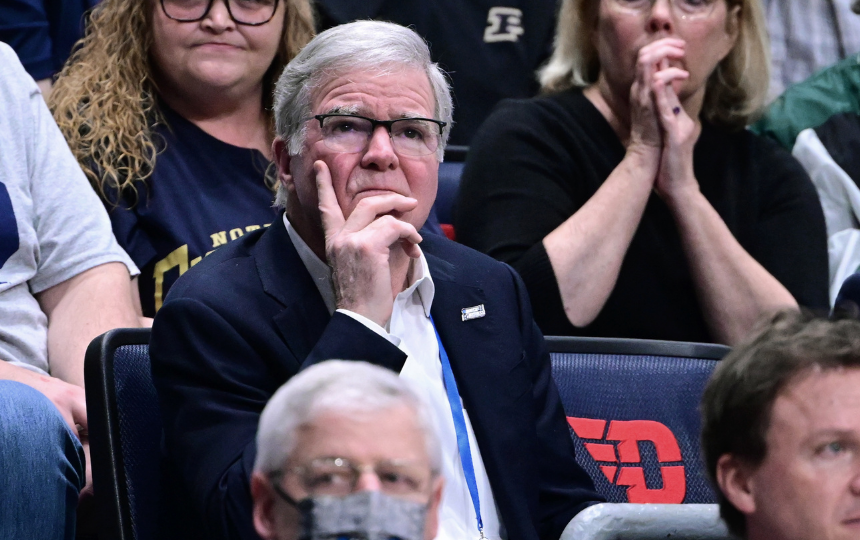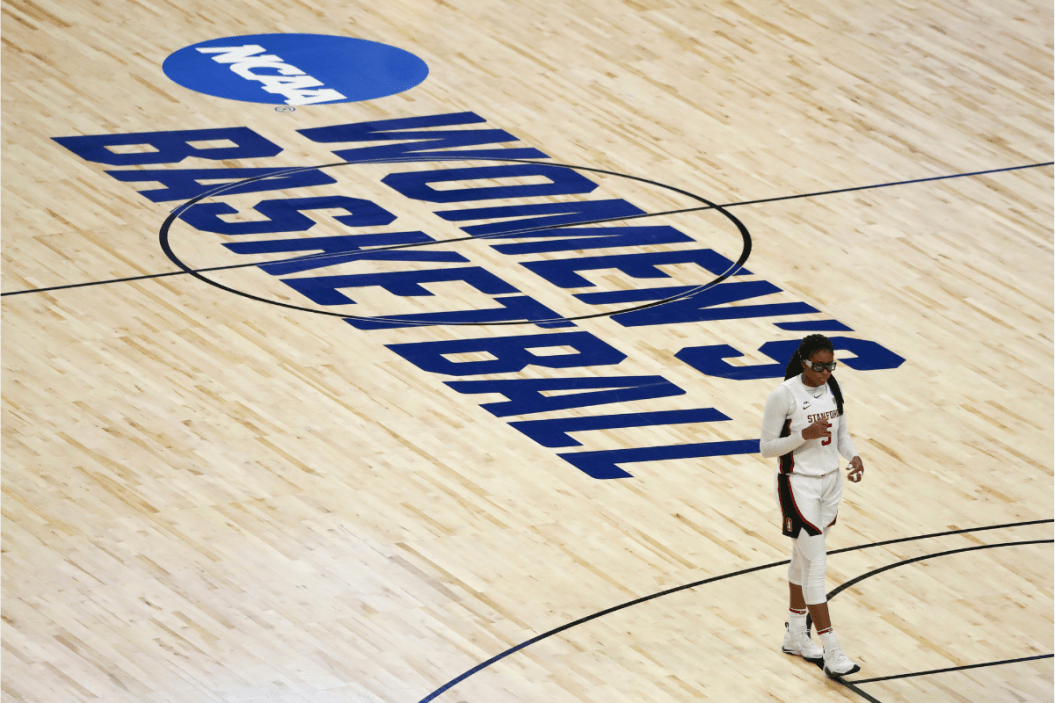The past two years have been weird. I'm not afraid to say it. Like every other aspect of our lives, sports went through their own set of circumstantial challenges.
One of the first victims of the COVID-19 pandemic was college basketball's 2020 NCAA Tournament. So, when vaccines started becoming available and we returned to semi-normalcy, the return of March Madness in 2021 was more than welcome. It wasn't the March Madness we were used to, though. The whole event was held in one location for the NCAA men's basketball tournament and the NCAA women's basketball tournaments. The men would play at various venues in Indianapolis. The women would do the same in San Antonio, Texas.
While the NCAA did everything they could to make the men's tournament in Indy as close to normal as possible, the women weren't so lucky.
As if there were any more evidence needed to show the disparities between how the NCAA views men's and women's sports, look no further than the conditions of the 2021 NCAA women's basketball tournament.
The Poor Conditions at the 2021 NCAA Women's NCAA Tournament
The public first caught wind of the NCAA's ridiculous setup in San Antonio when former Stanford strength coach Ali Kershner posted comparative photos of the men's and women's weight rooms on Instagram. The women had one dumbbell rack and some yoga mats. That's it. As for the men? They had multiple squat racks, benches, free weights and a huge stretching area. It was as good a makeshift weight room as you could get.
Let me put it on Twitter too cause this needs the attention pic.twitter.com/t0DWKL2YHR
— Sedona Prince (@sedonaprince_) March 19, 2021
The NCAA responded by issuing a statement claiming "limited space" was the reason behind the women's lousy setup. Oregon forward Sedona Prince quickly debunked the statement by posting a video on Twitter that showed the ample amount of available space to build an adequate weight room.
The weight room differences were only the beginning.
@sedonerrr
Prince also posted a TikTok showing the food quality at the women's tournament. The spread was....unappetizing. I would take my school lunch 1,000 times out of 1,000. Meanwhile, the men had full buffets.
The list only grew longer. The men had substantially larger swag bags.
From what I have been shown it appears the swag bags that the Men receive from the @NCAA are much more substantial than the Women as well. @ncaawbb @marchmadness. C'mon NCAA do better. Be better! pic.twitter.com/tDRjI9e5UJ
— Dan Henry (@danhenry3) March 18, 2021
For COVID testing, The men were using daily PCR tests while the women used daily antigen tests, which are less sensitive and more prone to false results. For media coverage, the NCAA's media hub had countless photos of the men's tournament and none of the women's.
Here are screen grabs of what I'm currently seeing on the NCAA media site.
Thousands of photos from the men's games, zero from the women's.
I've reached out to NCAA support to see if they can explain what's going on. https://t.co/08wZjMoCqD pic.twitter.com/EZ3SoG7V1r
— AJ McCord (@AJ_McCord) March 22, 2021
To top it off, the on-court branding was night and day. Other than the court at the AlamoDome, the women's courts weren't branded in any way to let you know you were watching the NCAA Tournament until the Sweet 16.
In Indiana, all of the men's courts appear to have official #MarchMadness branding.
Meanwhile in Texas... most of the women's courts have no official #ncaaW branding.
Yet another reminder that the @ncaa doesn't care as much about women's basketball. pic.twitter.com/4jcUbt47zi
— Alex Azzi (@AlexAzziNBC) March 21, 2021
It was clear the NCAA heavily prioritized the men's tournament and the women's was an afterthought.
How Did the NCAA Respond?

Ben Solomon/NCAA Photos via Getty Images
RELATED: Iowa's Caitlin Clark Deserves Your Attention
The NCAA, and NCAA president Mark Emmert specifically, caught a ton of flack. They apologized for the poor conditions and provided more resources, but the poor conditions were the results of a systemic problem.
Back in 2013, Val Ackerman wrote a report called "Division I Women's Basketball White Paper" that expressed more deep-rooted concerns on the state of women's basketball. It primarily highlighted the inequality between the men's and women's games. What did the NCAA do? As you can see from how they handled the 2021 NCAA Tournament, absolutely nothing. Emmert said there was no excuse for the lack of action.
"The women's basketball community first and foremost also has to determine which parts of those recommendations, like in [Ackerman's] or anybody else's white paper, they want to pick up and run with," Emmert said last year, per ESPN. "There's no excuse other than we need to do better and we need to get the commitment of all of our governance structure to get on with it."
The NCAA owned up to its wrongdoings and hired a law firm to conduct an independent gender study review of its championships across all sports, but it appeared to be a band-aid for a short-term wound.
On March 14 of this year, three U.S. representatives further called out Emmert and the NCAA for the lack of process between addressing equality between men's and women's sports.
"Although the NCAA has taken some short-term steps to avoid repeating the public relations catastrophe during last year's March Madness championships, it has been notably slow to commit to or implement recommendations that will ensure structural, long-term changes to advance gender equity," the letter reads, per Sports Illustrated.
The NCAA's response?
"The shortcomings at the women's basketball tournament last year have been well-documented and extensively covered," the NCAA said on March 15 in an emailed statement to Sports Illustrated. "Although our work is not done, we are focused on the many improvements made since then that provide students across all our championships with a lifelong memorable experience."
Yeah...sounds like things are really going to change. Just like they have in the past.
Women's basketball players — including studs like Iowa's Caitlin Clark, South Carolina's Aliyah Boston and UConn's Paige Bueckers — deserve the spotlight as much as anyone. It's time the NCAA gives it to them and stops pretending like they treat women hoopers equally. Their track record clearly shows they don't.
